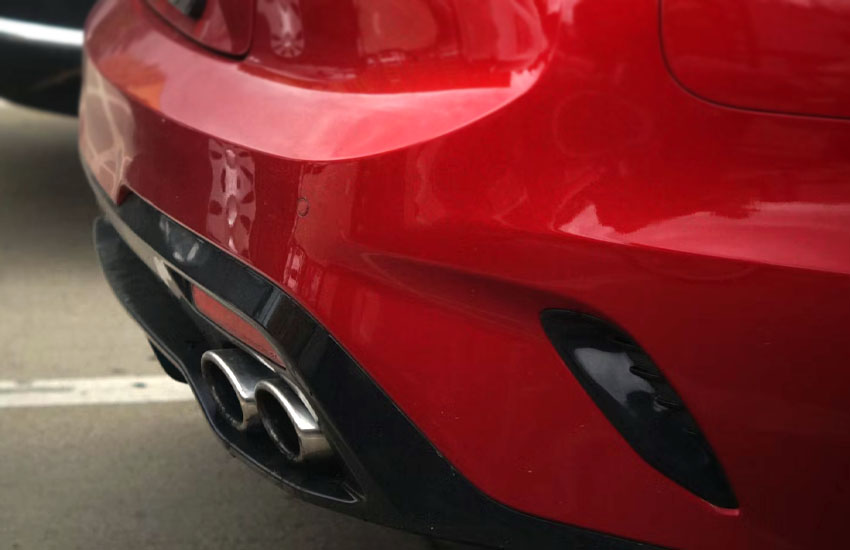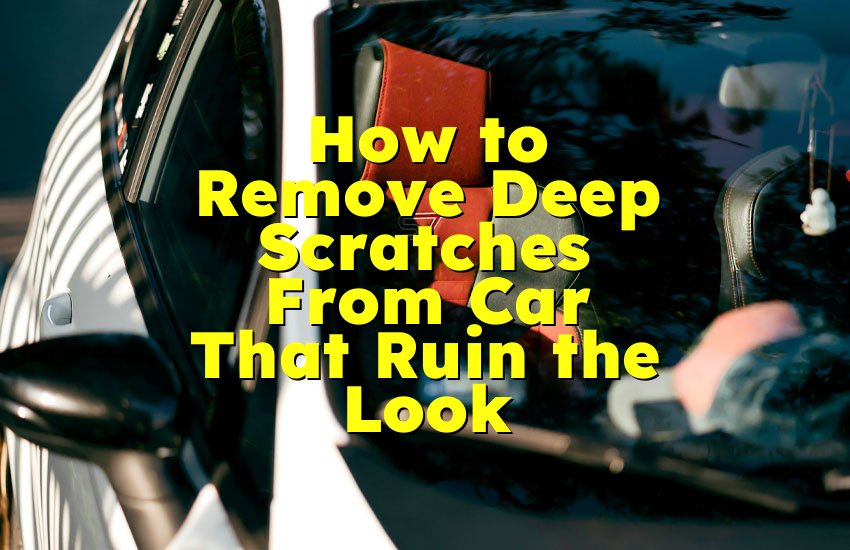As an Amazon Associate, I earn from qualifying purchases at no extra cost to you.
How to Make Your Car’s Muffler Louder By Drilling Holes
If you've ever wished your car could roar a little louder, you're not alone. Some drivers love the sound of a loud engine, and one easy way to boost that sound is by making some modifications to the muffler. Drilling holes in your muffler is one way people try to increase the volume, but there are some things you need to know before you grab that drill.
In this article, I'll walk you through the process of how to drill holes in your muffler to make it louder. I'll also cover why you might want to do this, where exactly to drill, and some safety tips to keep in mind. So let's get started and explore how you can give your car a little more attitude!

Why Make Your Muffler Louder?
Before you start drilling, it's important to understand why people do it in the first place. Some drivers enjoy a louder muffler because it makes their car sound more aggressive. It can be satisfying to hear the engine roar, especially when you accelerate. Some people also think a louder car makes them stand out, while others simply like the thrill of a more powerful sound.
But, there are also some practical reasons why someone might want to make their muffler louder. For example, if you’re trying to get more attention at car meets or shows, a loud exhaust can make you the center of attention. Additionally, a louder muffler can sometimes give the illusion of increased performance, even if it doesn't actually make the car go faster.
In short, making your muffler louder is a personal choice. It might be because you like the sound, or you might want to stand out in a crowd. Either way, it's something you can do relatively easily with a few tools and the right knowledge.
The Right Way to Drill Holes in Your Muffler
Now that we know why people want a louder muffler, let's dive into the steps you need to follow to drill holes in your muffler. Keep in mind that drilling is not a permanent solution, and you'll need to do it carefully to avoid damaging your car. Also, some mufflers are designed to be more sensitive than others, so make sure you’re prepared to handle this modification properly.
Understanding the Muffler Design
Before drilling, it's important to understand the basic design of a muffler. Mufflers are typically made of metal and contain internal chambers or baffles designed to reduce noise from the engine. The muffler works by redirecting exhaust gases through these chambers, where sound is absorbed or deflected.
When you drill holes in the muffler, you disrupt this process, which allows more sound to escape. However, drilling too many holes or placing them in the wrong spots can result in excessive noise, or even cause damage to the muffler.
Choosing the Right Spot to Drill
When it comes to drilling holes in your muffler, the placement is key. You don't want to drill just anywhere on the muffler, as this could cause problems with the airflow or weaken the structure.
The best places to drill are usually on the side or bottom of the muffler. The goal is to let some exhaust gases escape without compromising the overall function of the muffler. The size of the holes also matters. You don’t need to drill big holes, just enough to let some sound out without damaging the muffler.
A general rule of thumb is to start with smaller holes and test the sound. If you want it louder, you can always drill a few more. But remember, bigger holes can lead to a lot more noise, and you don’t want it to be too loud.
Tools You'll Need
Before you start drilling, you'll need to gather a few tools. Here's a quick list of what you'll need:
- Drill
- Drill bits (a set with varying sizes is ideal)
- Safety glasses and gloves
- Masking tape (optional)
- A jack and jack stands (for safety)
- Wrenches (for removing the muffler, if needed)
Having these tools ready will make the job easier and safer. The most important thing is to be careful and wear your safety gear. Drilling metal can send small bits of sharp metal flying, and you don't want that near your eyes or hands.
Drilling the Holes: A Step-by-Step Guide
Now that you know why you're drilling holes and what tools you need, it's time to get started. Here's a step-by-step guide on how to drill holes in your muffler to make it louder.
Step 1: Lift the Car and Secure It
Before you can work on the muffler, you need to lift the car safely. This is especially important if you're working underneath the vehicle. Use a jack to raise the car, and then place jack stands underneath it to make sure the car is stable. Never work on a car that is only supported by a jack, as it could fall and cause serious injuries.
Once the car is safely lifted and secured, you'll have easy access to the muffler.
Step 2: Locate the Muffler
The muffler is typically located near the back of the car, just before the exhaust pipe exits. It's a large, metal component that can vary in size depending on your car's model. Once you find the muffler, examine it closely to figure out where to drill. The bottom or side of the muffler is usually the best place to make small holes.
Step 3: Mark the Spots to Drill
Before you start drilling, use some masking tape to mark the spots where you'll drill the holes. This can help you keep the holes evenly spaced and prevent mistakes. You might want to start with just a few marks and see how the sound changes after drilling. Remember, you can always drill more holes later if you want it louder.
Step 4: Drill the Holes
Now comes the fun part—drilling! Put on your safety glasses and gloves, and start drilling at the spots you've marked. Start with a small drill bit and slowly work your way up to a larger size if needed. Drill carefully, making sure not to put too much pressure on the drill. It's better to go slowly and steadily than rush and damage the muffler.
Step 5: Test the Sound
Once you've drilled the holes, it's time to test the sound. Start the engine and listen to the muffler. If it's not loud enough, you can drill a few more holes, but be careful not to overdo it. The goal is to get a sound you like without going too far.
Step 6: Check for Leaks or Damage
After drilling, check the muffler for any signs of damage or leaks. If the muffler starts to leak exhaust gases, you may need to repair or replace it. Also, make sure the muffler is securely attached to the car before you drive it.
Potential Risks and Things to Consider
While drilling holes in your muffler can make your car louder, there are some risks and things to keep in mind.
Noise Regulation Laws
In many places, there are laws about how loud your car can be. If your muffler is too loud, you could get in trouble with local authorities. Make sure to check the noise laws in your area before drilling holes in your muffler. If you're unsure, it's always better to err on the side of caution and keep the noise level moderate.
Potential Damage to the Muffler
Drilling holes in your muffler can also weaken the structure, especially if you make too many holes or place them in the wrong spots. Over time, this could cause the muffler to fail and need replacement. It's a good idea to keep an eye on the muffler for any signs of damage.
Warranty Issues
If your car is under warranty, drilling holes in the muffler could void your warranty. Make sure to check with the manufacturer or dealership before making any modifications.
Final Thoughts
Making your muffler louder can be a fun and easy way to change the sound of your car, but it's important to do it carefully and consider the risks. Hopefully, this article has given you the information you need to get started.
Frequently Asked Questions
Can drilling holes in the muffler damage the car?
Yes, drilling too many holes or drilling in the wrong spots can cause damage to the muffler or other parts of your car.
Do I need any special tools to drill holes in my muffler?
You'll need a drill, safety gear (gloves and goggles), and possibly a jack to lift your car. A variety of drill bits can help you get the size you want.
Is it legal to drill holes in my muffler?
It depends on your local laws. Some places have noise regulations that could result in a fine or ticket if your car is too loud.
Can I drill holes in any muffler?
Not all mufflers are the same. Some are more sensitive, and drilling could damage them. It's best to check your muffler type and make sure it's safe to drill.
Is it better to drill small or large holes for a louder sound?
Start with smaller holes and test the sound. Larger holes can make it louder, but they can also cause more noise than you might want.
Do I have to remove the muffler to drill holes?
You don't necessarily need to remove the muffler, but it can make the process easier. Lifting the car and securing it will give you the access you need.
Can drilling holes in the muffler improve performance?
Drilling holes might make your car louder, but it doesn't increase engine performance. It's mainly about the sound, not the speed.
Can I undo the drilling if I don't like the sound?
Unfortunately, once the holes are drilled, they're permanent. However, you can replace the muffler if you decide you don't like the sound later on.











